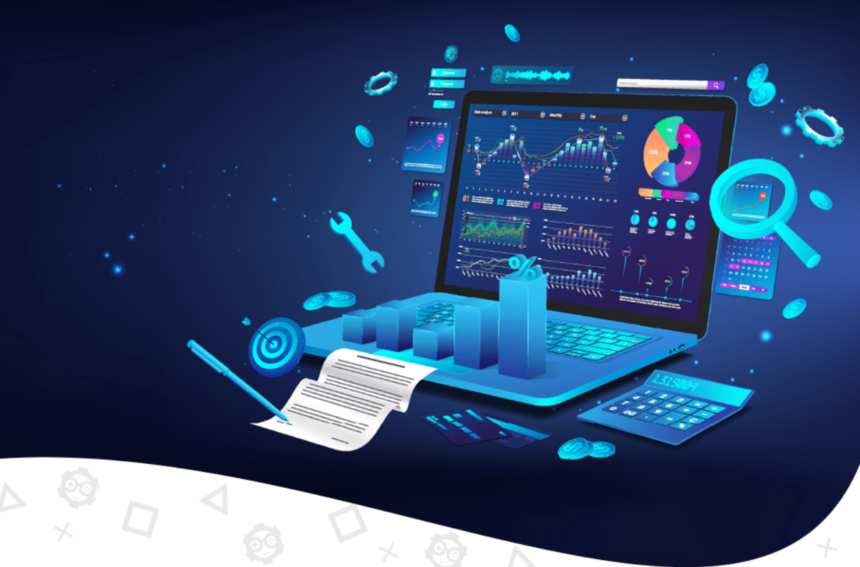Social media monitoring is now essential for businesses, involving systematic tracking of platforms to analyze brand mentions, customer sentiment, and market trends. With 4.59 billion global social media users in 2022 (projected to approach six billion by 2027), this practice is invaluable for businesses aiming to grasp and connect with their audience effectively.
What is social media monitoring?
Social media monitoring provides a digital pulse on brand-related conversations, extending beyond profile oversight to analyze the broader social media landscape. This enables businesses to gain insights into their brand, competitors, and industry trends.
By engaging in social media monitoring, businesses access real-time data, track brand mentions, monitor relevant hashtags, and understand customer sentiment. Analyzing this data strategically helps identify customer concerns, gauge public reception to new products or campaigns, and detect potential crises early.
How does social media monitoring work?
Monitoring social media involves several key steps to effectively manage and analyze a brand’s online presence:
1. Defining relevant keywords and phrases: The process begins by pinpointing specific keywords, phrases, brand names, or hashtags. This ensures focused and targeted monitoring.
2. Utilizing specialized tools: Dedicated social media monitoring tools sift through posts, comments, tweets, and other interactions to sift out irrelevant content and pinpoint relevant mentions.
3. Data interpretation: Advanced algorithms analyze the gathered data to discern sentiment, detect trends, and assess public perception. This analysis provides valuable insights into customer behavior, emerging market dynamics, and competitive landscapes.
4. Presenting insights: Insights gleaned from the analysis are consolidated into reports, enabling brands to comprehend their online footprint, evaluate the efficacy of marketing strategies, and make informed decisions for future campaigns.
Challenges of social media monitoring and Solutions
While invaluable, social media monitoring poses several challenges:
1. Handling data overload: Implement advanced filtering and prioritization to manage the vast amount of data effectively.
2. Ensuring data accuracy: Use a social media analytics tool capable of understanding context and regularly refine monitoring parameters.
3. Navigating ethical dilemmas: Adhere to privacy laws and ethical standards, being transparent and responsible in data usage.
4. Balancing automation and human interaction: Combine automated tools with human insight for effective monitoring, regularly reviewing processes, and focusing on team training.
Benefits of social media monitoring
Social media monitoring serves numerous strategic purposes and offers significant benefits for businesses of all sizes:
1. Set clear objectives: Define achievable goals such as improving customer service, increasing brand awareness, managing reputation, or evaluating campaign effectiveness. Tailor monitoring activities accordingly.
2. Select relevant metrics: Choose metrics like mention volume, sentiment analysis, engagement rate, and influencer impact that align with your objectives. For instance, monitoring sentiment can gauge brand perception.
3. Identify keywords and hashtags: Pinpoint relevant terms crucial to your brand and industry. Monitor these to capture pertinent conversations and gain actionable insights.
4. Establish monitoring schedule: Maintain consistency based on your brand’s needs—real-time, hourly, daily, or weekly—to align with social media activity and audience expectations.
5. Handle data privacy and ethics: Adhere strictly to GDPR and CCPA guidelines, ensuring transparent data use, consent where needed, and robust security measures.
6. Humanize brand responses: Craft authentic, empathetic responses that resonate with individual interactions. Personalize replies to reflect your brand’s voice and context, fostering positive sentiment and loyalty.
Effective social media monitoring strategy
An effective social media measurement and monitoring strategy involves:
1. Set clear objectives: Define achievable goals such as improving customer service, increasing brand awareness, managing reputation, or evaluating campaign effectiveness. This focus guides tailored monitoring activities.
2. Select the right metrics: Metrics like mention volume, sentiment analysis, engagement rate, and influencer impact should align with objectives to gauge social media performance. For instance, monitoring sentiment can reveal brand perception improvements.
3. Identify relevant keywords and hashtags: Use keywords and hashtags pertinent to your brand, industry, and goals. Track these to capture relevant conversations and derive actionable insights.
4. Establish a monitoring schedule: Consistency is crucial; choose a schedule (real-time, hourly, daily, weekly) based on your brand’s needs, audience expectations and best times to post on social media on different platforms. Fast-paced industries may require more frequent monitoring.
5. Handle data privacy and ethics: Ensure compliance with GDPR, CCPA, and other legal standards. Obtain consent where necessary, ensure transparency, and maintain data security to respect user privacy.
6. Humanize brand responses: Personalize responses to reflect empathy and authenticity, enhancing customer engagement and loyalty. Avoid generic replies to foster meaningful interactions.
Final Thoughts
With billions on social media worldwide, analyzing interactions reveals brand perception, customer sentiment, and market trends. Using advanced tools, businesses enhance online presence, boost engagement, and make informed decisions.
Despite challenges like data overload, accuracy, ethics, and balancing automation with human touch, a well-executed monitoring strategy outweighs obstacles. Firms benefit by improving marketing, service, and reputation.













